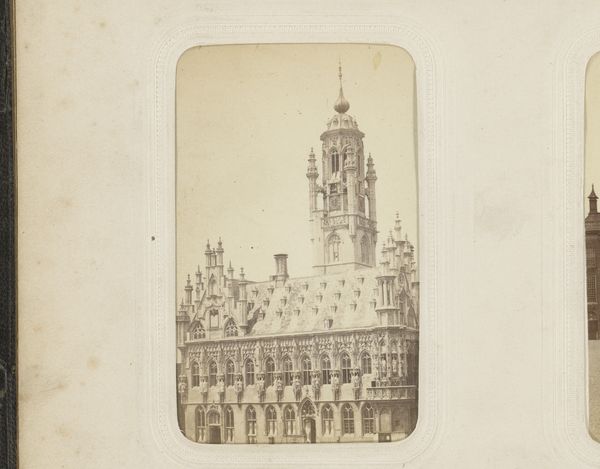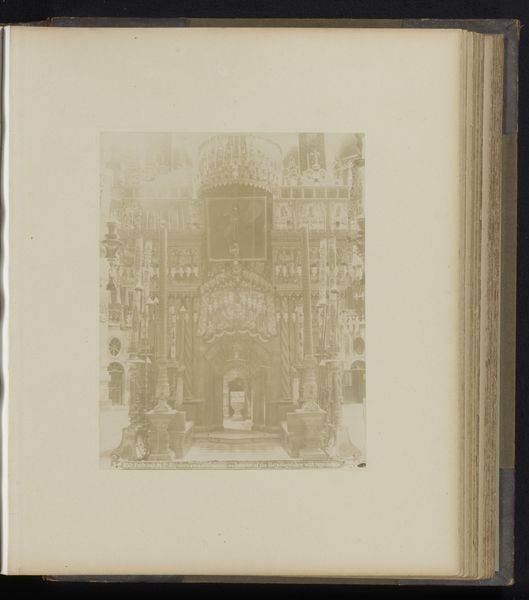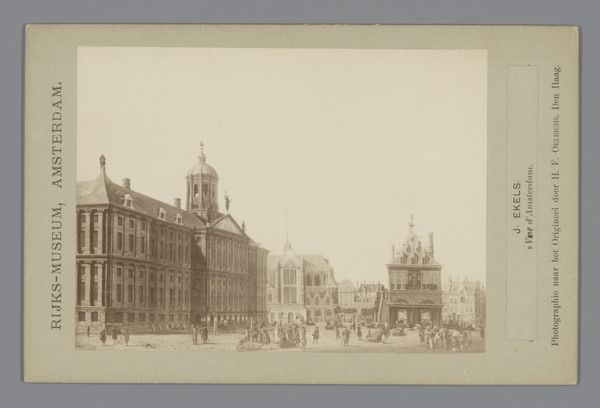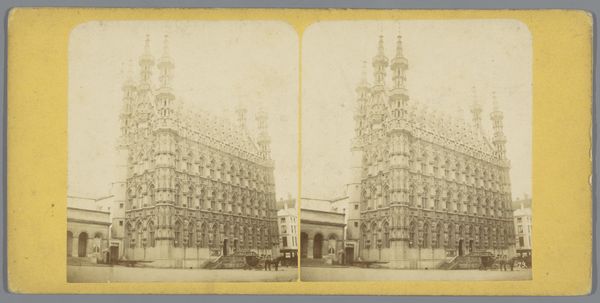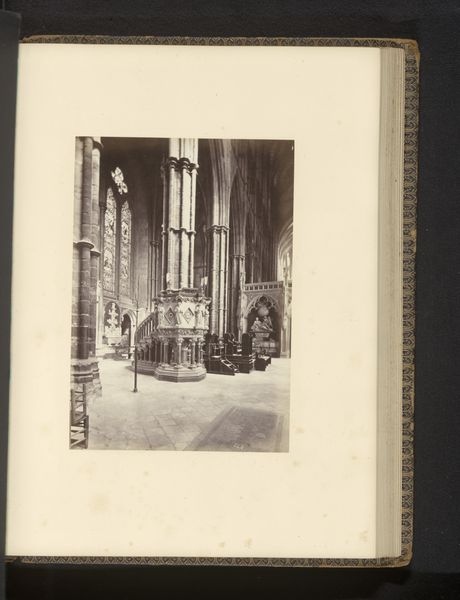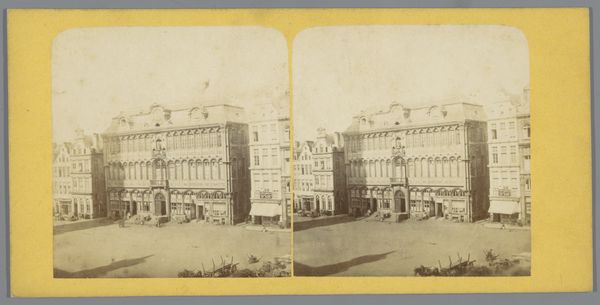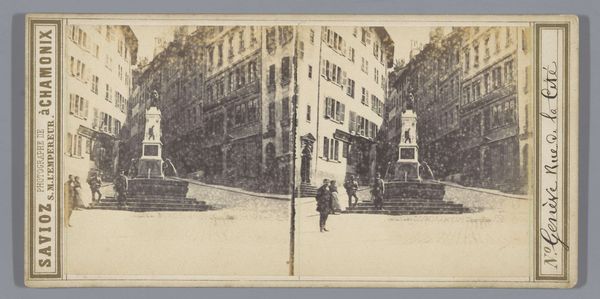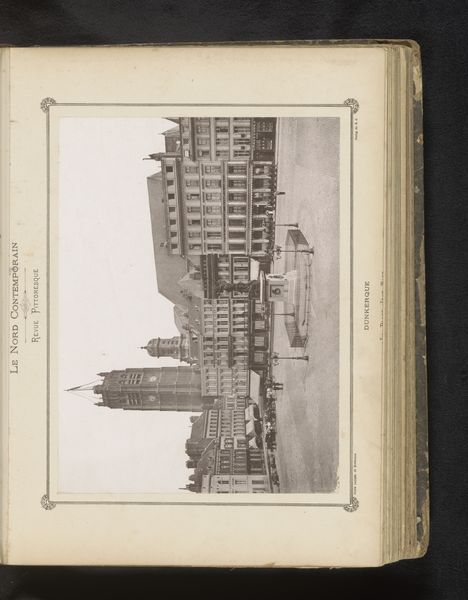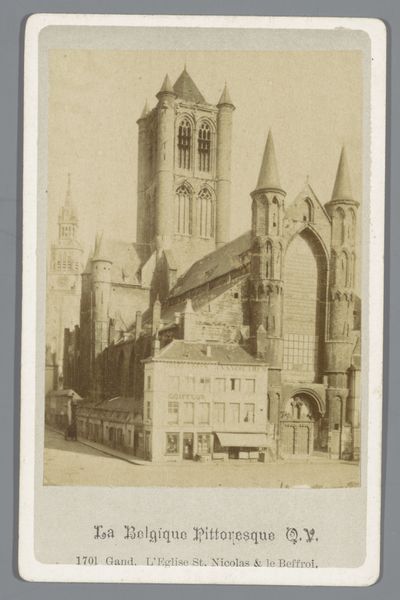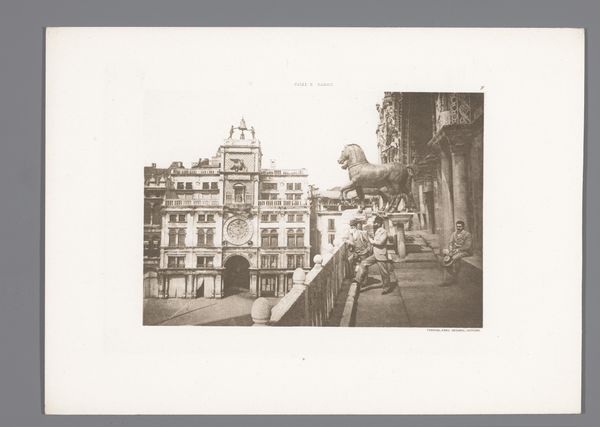
Dimensions: height 135 mm, width 105 mm, height 165 mm, width 235 mm
Copyright: Rijks Museum: Open Domain
Editor: Here we have a photograph titled "Raadhuis in München, August 1932, München," part of the Familie Wachenheimer collection, placing it roughly between 1932 and 1938. It's a black and white image of a very imposing, gothic-looking town hall. What do you make of this photograph? Curator: It is fascinating how this image captures the social context of its production. Consider the labour involved: the extraction of raw materials for the camera, the factory work assembling it, the photographer's labor, and then the development process. These layers of production are embedded in the photograph's very materiality. What does that mass of gothic ornamentation suggest to you, especially in the context of 1930s Germany? Editor: I guess I hadn't thought about all the stages to creating a photograph. I was mostly focused on the building itself. I suppose the architectural style might suggest an intended permanence or power... almost as propaganda? Curator: Exactly. Think about who commissioned such grand architecture, and why. Then consider the photographer’s choices. What kind of statement are they making, recording it like this in a specific medium, photography? Are they celebrating it or critiquing it? Also notice how the photo paper itself is mounted on a dark, heavy page within a family album. What does this physicality tell us? Editor: That makes me consider the purpose of its existence a bit more. Perhaps this was created with a specific meaning? It might suggest the power and stability of the institutions housed inside it, but viewed now it evokes questions about whose values those institutions represent. Curator: Precisely. It shows that beyond the image, the choices in production and display affect its meaning. Editor: It’s interesting to consider that the message of this is really determined by the way it was created, by the paper it's printed on, even who paid for its existence, much more than I realized! Curator: Indeed, by looking at its making and consumption, we gain a deeper understanding of this work and the world it represents.
Comments
No comments
Be the first to comment and join the conversation on the ultimate creative platform.
